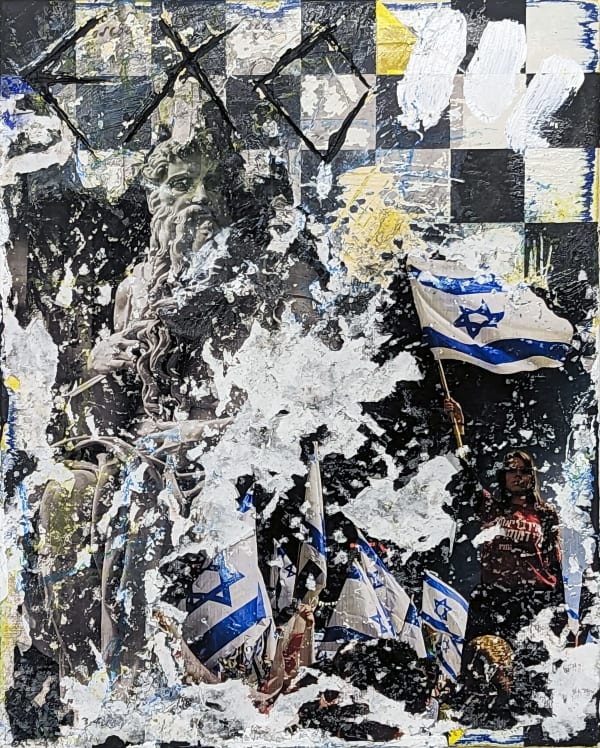Zavier Ellis BRITISH, b. 1973
Zavier Ellis combines the use of text with painterly, collage, assemblage and photographic techniques. Language is deployed to obfuscate and open new possibilities and meanings. Street signs, historical graffiti, literature and coded language are referenced by etching, collaging, painting and other means. Narrative is implied and the audience is invited into a confused dialogue with artist and artwork where the broken, derelict, incomplete and mistaken are noted but not embraced.
Combined with intense and layered application of traditional and industrial paints, drawings, collage, recycled studio detritus, and preparatory or found materials, Ellis creates a dynamic that oscillates between the cerebral and physical; conscious and unconscious; organised and chaotic; premeditated and instinctive. His hope is to give force to the reality of history and its price, rather like Ian Hamilton Finlay for Ellis the revolutions that mark the modern age are not so much to be celebrated as to be known and judged.
Zavier Ellis was born in Windsor in the United Kingdom in 1973. He read History of Modern Art atManchester University (1993-1996) before undertaking a Masters in Fine Art at City & Guilds of London Art School (2003-2005). Ellis has exhibited widely including Museum der Moderne, Salzburg; Saatchi Gallery, London; Torrance Art Museum, Los Angeles; KlaipėdaCulture Communication Centre, Klaipėda; Royal West Academy, Bristol; Dean Clough, Halifax; Paul Stolper, London; Galerie Heike Strelow, Frankfurt; Raid Projects, Los Angeles; Pera Museum, Istanbul and ENIA Gallery, Pireas. His work is featured in notable private collections including the seminal Sammlung Annette und Peter Nobel, Zurich and Beth Rudin DeWoody, Los Angeles.
Made in response to in depth historical research, his work combines text and expressive materiality with an emphasis on the reality of fragmentation. He is interested in histories and society’s conditioned responses to the multi-valent impact of tone and perspective.
|


